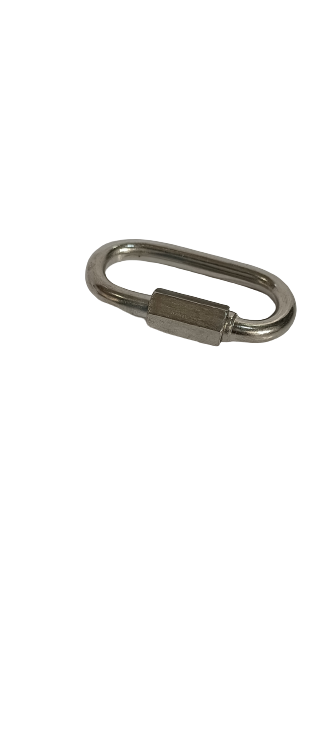
STANDARD QUICK LINK
A standard quick link, also known simply as a quick link or a chain link connector, is a type of metal hardware used to quickly and easily connect two components together. It is a versatile and reliable piece of equipment commonly used in various applications, including rigging, lifting, camping, boating, and industrial settings.
Key features of a standard quick link:
Shape: Quick links typically have a symmetrical oval or circular shape with threaded closures at each end.
Threaded Closures: The threaded closures allow for easy opening and closing of the link. You can screw and unscrew the closures by hand, making it convenient for quick connections and disconnections.
Materials: Quick links are usually made from durable materials such as steel or stainless steel, providing strength and resistance to corrosion.
Load Rating: Quick links come in various sizes and load ratings, and it's essential to use the appropriate size and strength for the intended application.
Uses of standard quick links:
Rigging and Lifting: Quick links are commonly used in rigging and lifting applications to connect chains, slings, and other lifting equipment.
Camping and Outdoor Activities: In camping and outdoor activities, quick links can be used to connect equipment, secure gear, or build improvised structures.
Boating and Marine: Quick links are employed in boating and marine settings to connect ropes, chains, and anchor systems.
Industrial and Construction: Quick links are used in industrial and construction settings for various applications, such as connecting safety equipment, tools, and machinery.
Pet and Animal Care: Quick links are used in pet and animal care to secure leashes, chains, and other animal-related equipment.
It's essential to use quick links appropriately and ensure they are rated for the intended load and application. As with any hardware, regular inspection for wear, deformation, or damage is crucial to ensure their reliability and safety during use. Additionally, be sure to follow the manufacturer's guidelines and best practices for proper use and maintenance.